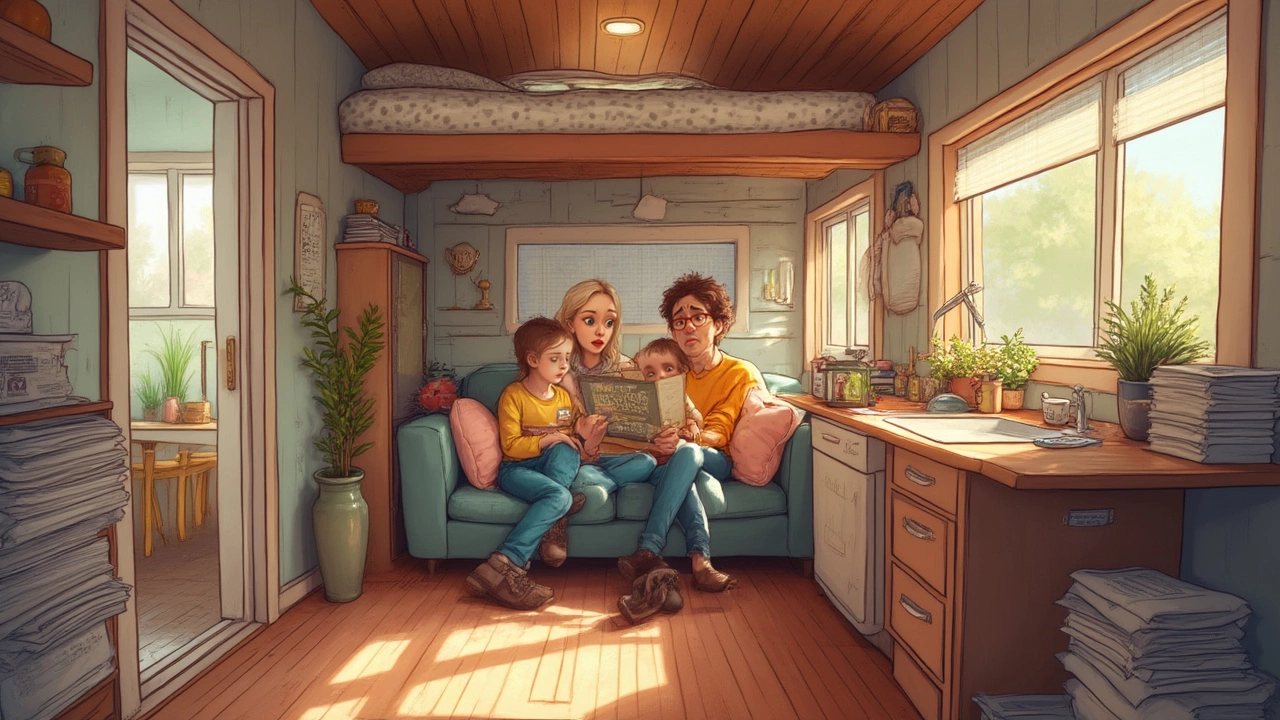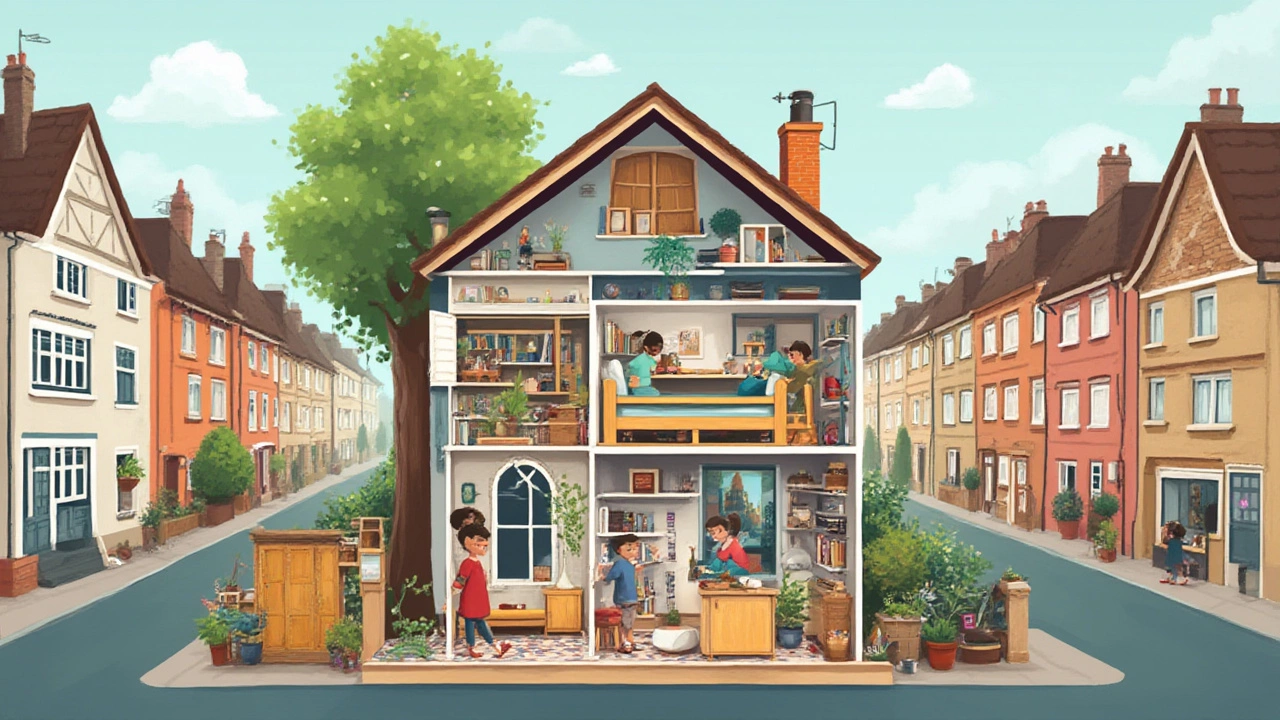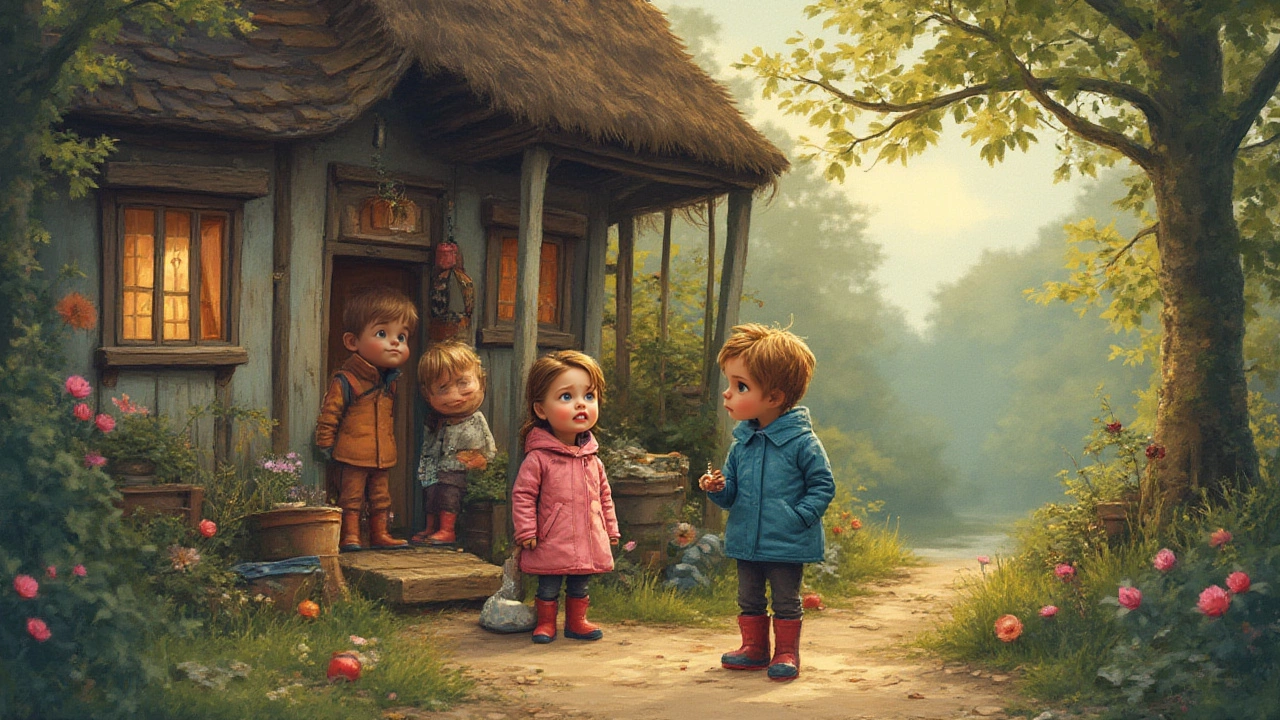Two years ago, I found myself daydreaming about trading my mellow Auckland house for a tiny home on wheels. The minimalist Instagram feeds hooked me: cribs on mountain ridges, bathtubs by picture windows, smiling families beside artfully stacked firewood. It looked like freedom. But when those Pinterest-perfect dreams meet messy family reality—muddy rugby boots, school bags, scattered Lego—the draw fades. If you’re hovering over the idea of tiny living, stop scrolling and let’s get ruthlessly honest about why it isn’t all hammock days and magical sunsets.
Space Constraints: The Most Obvious Tiny House Downside
Living small, really small, reveals how much you value space in ways you never notice in a regular home. Let’s talk actual numbers: the average New Zealand home is around 155 square meters. Tiny houses? Often under 30 square meters, some even less. This dramatic difference means you’ll constantly play Tetris with your belongings. Storage ottomans, collapsible tables, vacuum bags—these become survival tools, not just clever hacks on a lifestyle blog.
If you have kids like mine, Romy and Lennox, the practical pain point comes fast: nowhere to hide the everyday chaos. Art projects and dinosaur toys spill out, with no hallway to toss them in or spare wardrobe to hide the evidence. Entertaining friends? That gets awkward, unless you love reenacting sardine can comedy sketches. Bedrooms tend to be sleeping lofts. Cleaning under beds sounds easy, but try convincing a five-year-old to climb a ladder every night. Co-sleeping wins by necessity—but privacy for parents is basically nil.
Using every inch means ruthless prioritising. Do you need that second skillet? Will your partner accept the idea of shared wardrobe space (hint: they won’t)? Kids grow out of clothes constantly. For families, real-life minimalism equals near-daily trips to the thrift store drop box. The fantasy of a Zen-like, clutter-free environment disappears fast when a rainy week keeps everyone indoors. Soon, a few muddy gumboots or scattered jackets make the place feel smaller than a car boot.
Lack of Privacy and Personal Space
Here’s a harsh truth: there’s nowhere to escape in a tiny house. That quirky “open concept” design means conversations echo, bathroom trips are never quite private, and arguments—every family has them—turn into performances for everyone present. The need for quiet time ramps up when you can literally hear a child sneeze from across the “house.” If you work from home, this gets rough: juggling Zoom meetings while a toddler plays three metres away is nobody’s productivity dream.
Teenagers? Ask one where they’d put their posters and treasures, and watch the look on their face. A University of California, Irvine study found kids’ emotional development is shaped by spaces to retreat, even if it’s just a corner. For couples, intimacy turns into an Olympic-level balancing act (hello, thin walls and creaky floorboards). Families aren’t the only ones to feel the squeeze: even solo adventurers admit that sometimes, solitude means sitting in your car or taking suspiciously long walks just to clear your head.
Guests can be a real challenge, too. Instead of hosting the whole whānau for Sunday lunch, you’ll be skimming Airbnb for larger venues. Spontaneous sleepovers or having Grandma stay? That’s pretty much a nonstarter unless you’re swapping your bed or pitching a tent.
| Privacy Feature | Traditional House | Tiny House |
|---|---|---|
| Separate bedrooms | Usually 2-4 | Often none |
| Dedicated work space | Common | Rare |
| Doors between rooms | Yes | No or few |

Poor Storage and Clutter Management
No matter how many trendy storage bins you buy, you’ll face the hard laws of physics: some stuff just doesn’t fit. Seasonal gear? Good luck finding a dry, safe spot for camping tents, bikes, or midwinter raincoats. Most tiny homes are forced to cheat by renting a storage unit, defeating some of the cost savings. Let’s be real—nobody dreams of hauling the Christmas tree out of a storage shed or driving half an hour for summer soccer gear. It’s an endless cycle: purge, store, regret, repeat.
Kitchens get the worst of it. That stylish two-burner cooktop replaces a proper stove. Baking two trays of cookies at the same time? Not a chance. Forget those towering birthday cakes or elaborate family dinners unless you love washing dishes every five minutes. Fridges are petite, so spontaneous supermarket runs become a weekly ritual, not a quirky adventure. Dry goods, canned food, and packed lunches for school? Best keep things simple and repetitive.
Bathrooms shrink, too. Built-in cabinets disappear. Toiletries must earn their spot—imagine explaining to your beauty-obsessed tween why there’s only room for one shampoo. If you need medical gear, craft supplies, or more than three towels, prepare for strategic storage plans straight out of a military drill. Every purchase is an exercise in problem-solving.
- Choose multi-purpose items (think: sofa-beds, fold-down desks)
- Rotate clothes in and out with the seasons—ruthlessly
- Get creative with wall storage: vertical racks, hanging baskets
- Consider hidden compartments—especially under stairs or van benches
- Plan for a storage locker or shared garage if you have kids and hobbies
Legal and Practical Hurdles
Here’s something people don’t confess in those beautiful tiny home docos: council rules and local laws make life a headache. New Zealand, for example, is a patchwork of rules, making even parking your home legally a challenge. Many rural councils still haven’t adapted building codes to tiny house realities. Some see them as vehicles, others as dwellings—the difference can mean extra fees, weeks of paperwork, and confusion about basic stuff like insurance. City water and electricity hookups? Expect to jump through hoops. That dreamy spot on a friend’s paddock might not be as legal as you hope.
Financing can be tricky, too. Banks are shy about lending for tiny homes, so many owners sink savings or take out unusual loans. Resale value? It’s murky. Unlike regular houses, there isn’t a guaranteed market, so it’s hard to predict if your investment will hold. Insurance policies play catch-up, asking weird specific questions (“Is it more than 20m²?” “Does it have wheels?”). For renters, finding landmates willing to host your rolling cottage is another game of negotiation—and sometimes heartbreak.
Winter exposes another problem: insulation. Many local builders have stepped up, but not all use top-notch double glazing or super-insulated panels. Power bills can spike. Maintaining a tiny home requires constant vigilance for damp, mould, or pests sneaking in through cracks you never considered. If your setup relies on composting toilets, be prepared for regular, hands-on maintenance.

Impact on Family Dynamics and Well-Being
Perhaps the least spoken-about effect of tiny houses is the toll on your mental health and relationships. That constant proximity creates both warmth and friction. Days start to revolve around negotiation: whose work call gets priority, where the kids do homework, even meal prep schedules. If you crave alone time—or if anyone in your family is neurodiverse—tiny house living can stretch everyone’s nerves thin.
I’ll admit, some families do thrive. They discover hilarious new games and tighter bonds. But studies highlight the spike in stress hormones when people live in cramped quarters, especially long-term. An Asthma and Respiratory Foundation NZ report flagged higher rates of condensation, poor ventilation, and respiratory issues in smaller dwellings not built to code. Sunlight is precious. In a tiny home lost in the shade, moods get greyer fast.
If you’re weighing up tiny life, sit down with your partner or kids and be brutally honest about boundaries. Try a ‘tiny house trial’—rent one for a month and do normal life. Bring all your actual daily stuff, not just a toothbrush and yoga mat. Notice how you feel after week two. If everyone’s still grinning, you’re onto something. But if tensions run high, you’re probably not designed for micro-living, and that’s perfectly okay.
The fantasy of downsizing will always be strong for folks feeling pressured by mortgage debt or overwhelmed by clutter. But the biggest tiny house drawbacks are practical, emotional, and sometimes invisible until you’re living them. Minimalism sometimes means more effort, not less. If you do leap in, plan for extra patience—because you’ll need it for both your family and yourself.
